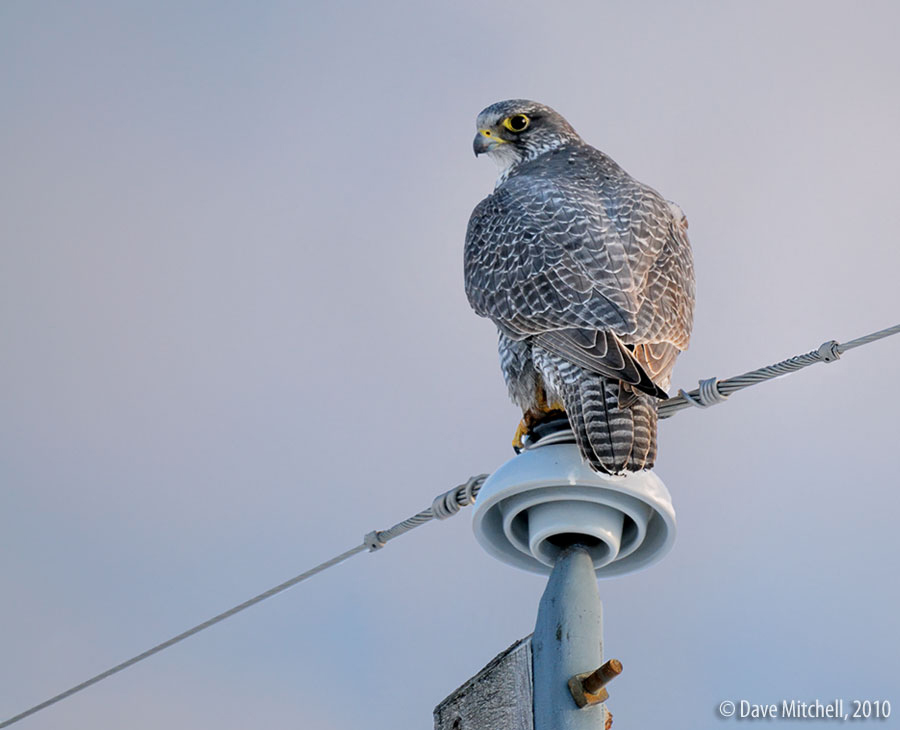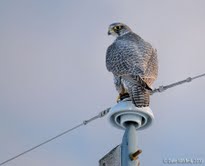
Raptor Identification - Gyrfalcon

If you have any photos of Gyrfalcons that you would like to contribute, please e-mail them to us with a caption and the photographer's name (but be aware that we must be selective of which photos we include because of space limitations for our website). |
Click on each photo for a description and a bigger picture

|

|
||

|
 |
||

|

|
Gyrfalcon (Falco rusticolus)
The Gyrfalcon is North America’s largest falcon (similar in size to a Red-tailed Hawk or Raven) and breeds exclusively in the Arctic. Even
in the winter it rarely ventures south of Canada. In addition to the size difference,
Gyrfalcons can be told apart from Peregrines by their lighter underwings and narrow or
absent moustaches.
The following article about Gyrfalcons was reproduced (with modifications) from the March 2002 issue of CPF's Talon Tales. The article was written by Marcel Gahbauer.
|
Etymology: The gyrfalcon’s name is thought to be derived from the Latin hierofalco, meaning "sacred falcon" in reference to the bird’s exalted position in falconry, where it was traditionally reserved for use by only kings and princes. Alternatively, it may come from the old German gir, meaning "greedy", recognizing the bird’s voracious appetite. The scientific name is Falco rusticolus, which is Latin for "falcon living in the country", acknowledging its tundra habitat. The species has also been known as jer-falcon, gerfalcon, Greenland falcon, and Iceland falcon.
Habitat and distribution: Natural history: As many as eight eggs have been recorded in a nest, but the usual number is three to four. The yellowish-white eggs have reddish-brown markings, and average 59 mm in length. Females do nearly all of the brooding, and in exchange the males provide all food during the five-week incubation period. The young are able to feed themselves by the time they are one month old, and usually fledge just under three weeks later. They remain dependent on their parents for approximately another month after that. In most areas, the gyrfalcon’s diet is primarily birds, especially ptarmigan and colonial seabirds; in fact, in some areas fluctuations in the gyrfalcon population are thought to be related to ptarmigan numbers. Some gyrfalcons also hunt mammals quite extensively, focusing on lemmings, hares, and ground squirrels. Two main hunting approaches are used. The passive method is to perch on an outcrop, watch for prey, then dive toward it. More commonly, they use an active "contour-hugging" approach, in which they fly low over the ground, surprising prey at close range, then pursuing it over sometimes long distances. Typically the gyrfalcon flies with slow, deep, powerful wingbeats which give it a rapid level flight; on occasion it may hover briefly while searching for prey. Conservation status: |
© Canadian Peregrine Foundation